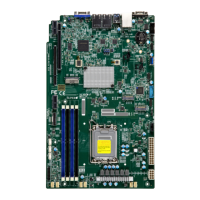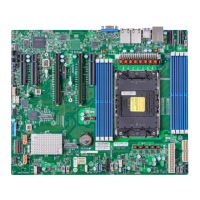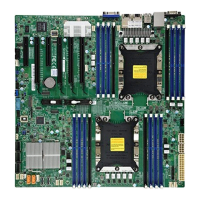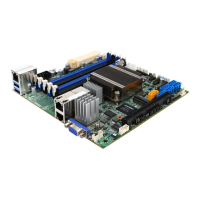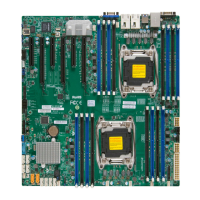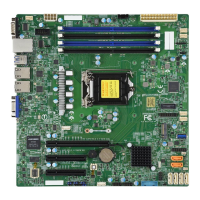Chapter 4: UEFI BIOS
117
Correctable Error Threshold
Use this feature to specify the threshold value for correctable memory-error logging,
which sets a limit on the maximum number of events that can be logged in the memory
error log at a given time. The default setting is 512.
Leaky Bucket Low Bit
Use this feature to set the Low Bit value for the Leaky Bucket algorithm which is used
to check the data transmissions between CPU sockets and the memory controller. The
default setting is 11.
Leaky Bucket High Bit
Use this feature to set the High Bit value for the Leaky Bucket algorithm which is used
to check the data transmissions between CPU sockets and the memory controller. The
default setting is 14.
ADDDC Sparing (Available when populating 1Rx4, 2Rx4, and 4Rx4 DIMM)
Select Enabled for Adaptive Double Device Data Correction (ADDDC) support, which
will not only provide memory error checking and correction but will also prevent the
system from issuing a performance penalty before a device fails. Please note that virtual
lockstep mode will only start to work for ADDDC after a faulty DRAM module is spared.
The options are Disabled and Enabled.
Patrol Scrub
Patrol Scrubbing is a process that allows the CPU to correct correctable memory errors
detected in a memory module and send the corrections to the requestor (the original
source). When this feature is set to Enable, the IO hub will read and write back one
cache line every 16K cycles if there is no delay caused by internal processing. By using
this method, roughly 64 GB of memory behind the IO hub will be scrubbed every day.
The options are Disabled and Enable at End of POST. (POST is the abbreviation for
Power_On Self Test.)
DDR PPR Type
Post Package Repair (PPR) is a new feature available for the DDR4/DDR5 technology.
PPR provides additional spare capacity within a DDR4/DDR5 DRAM module that is
raw element in a bank group of a DDR4/DDR5 DRAM device, while hard Post Package
Repair (hPPR) will take a longer time to provide a permanent repair on a raw element.
The options are PPR Disabled, Hard PPR, and Soft PPR.
Enhanced PPR
Use this feature to set advanced memory test for PPR enhancement. Select Enabled to
always execute for every boot. Select Once to execute only one time. The options are
Disabled, Enabled, and Persistent.
Memory PFA Support (Available when the DCMS key is activated)
Select Enabled to enable memory Predictive Failure Analysis (PFA) support. PFA can be
used to avoid uncorrectable faults in the same memory page. The options are Disabled
and Enabled.

